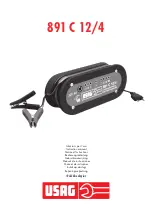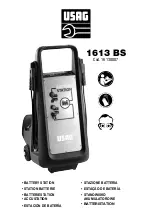
22
EN
If after the adjustment of the temperat
ure sensor the ‘mode’ button is not used
for a duration of 10 seconds the charger will exit the set-up mode. If at that
time a battery has already been connected then the charging process will start
according to the selected program.
The selected settings will always briefly light up when turning on the charger
(connetion of the mains). In the appendix you will find a overview.
If the mains voltage supply is removed, the last chosen charging program will
remain in the memory of the battery charger. In the case the charger will be
utilized for a different function than the previous one, then the proper
adjustments has to be determined again.
INSTALLATION
The atmosphere
The battery should be charged in an area with adequate because it may emit
explosive gases. Be sure that there is enough space around the charger. This
is important for the air circulation, for cooling of the charger and release of
gases emitted. The TBC 600 may be used outdoors, however protect the
charger against rain.
Important
Do not charge when there is a fuel leak or fuel is evaporating.
Mounting
The TBC 600 should be mounted vertically with the front side connectors
facing upwards.
Important
When the charger is to be used in an aluminium or steel ship/vessel, it must
be insulated by suspension. That is, in order to avoid electrolysis, the casing
of the charger may not be in contact with the ship.
Wire thickness
You can use the formula given below to determine the correct cable thickness.
If the result of the calculation is not a standard, existing cable thickness then
choose the cable that is the closed by.
Max. current x distance x 0,2 = cable mm2
battery
–
charger
Example : a TBC 612-1-25 is connected to the battery on a distance of 2
meters.
25 (current) x 2 (meter) x 0,2 = 10mmq
If the result is not a standard cable thickness, then use the nearest standard
cable thickness.
















































